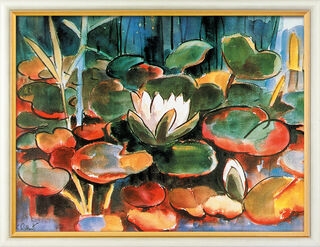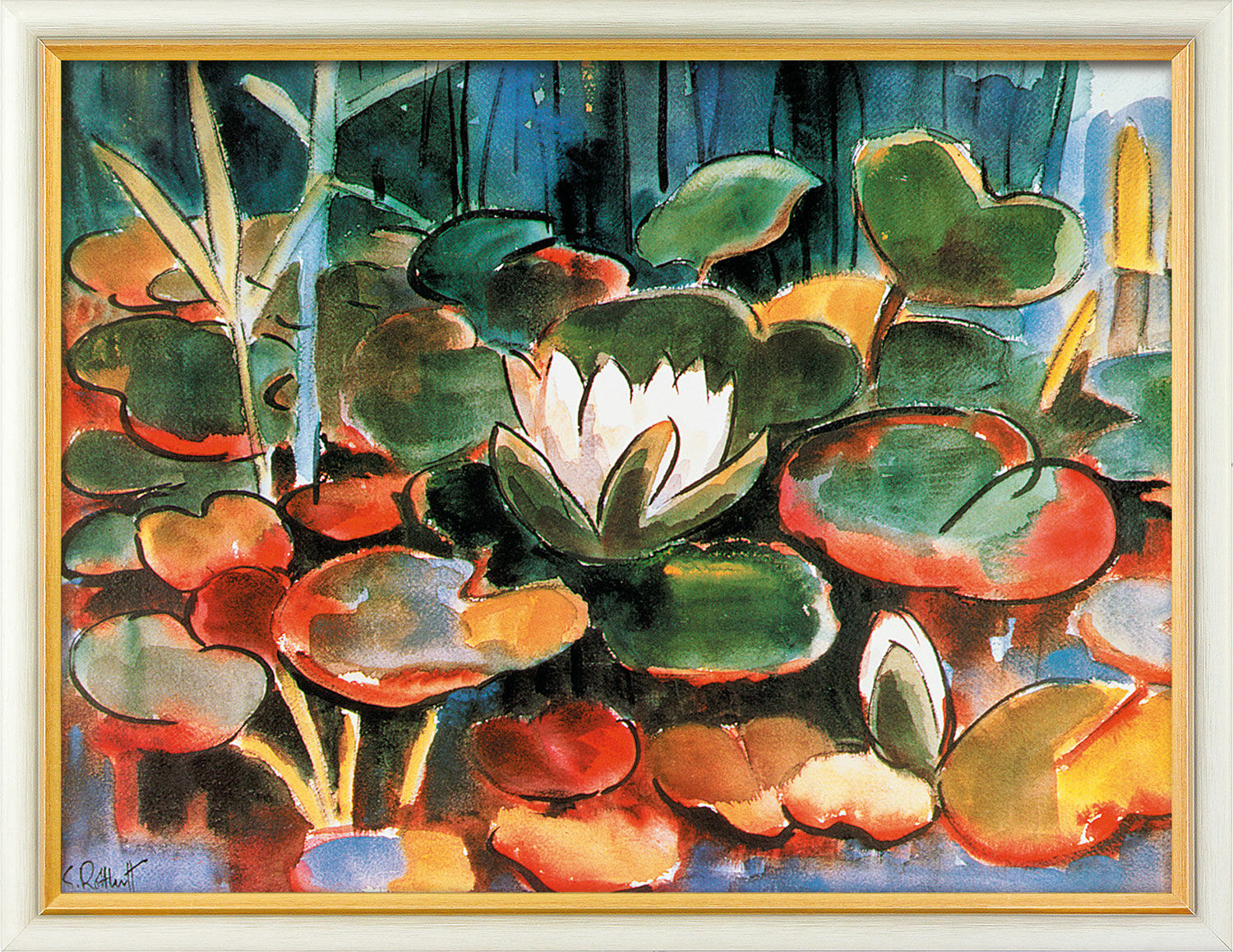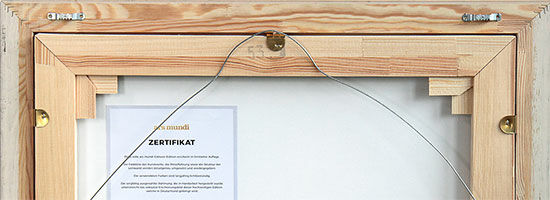Picture "Water Lilies" (1934), framed


Picture "Water Lilies" (1934), framed
Quick info
limited, 499 copies | reproduction, Giclée print on canvas | on stretcher frame | framed | size 69 x 89 cm (h/w)
Detailed description
Picture "Water Lilies" (1934), framed
Ancient cultures saw the water lily as a symbol of vitality and purity, and as early as 4000 B.C. in Egypt it was regarded as a symbol of world creation and rebirth: a predestined motif for Schmidt-Rottluff, who courageously broke new ground with his painting at a time when his art was considered degenerate.
Original: Watercolour, Ziegler Collection, Mülheim a.d. Ruhr Art Museum.
High-quality reproduction using the Fine Art Giclée process directly on a canvas and stretched on a stretcher frame. Limited edition of 499 copies. In handmade gallery frame. Size 69 x 89 cm (h/w).
Frame configurator
Customised picture frame

Frame configurator
Customised picture frame






Customer reviews
Frame variant: framed
Ein sehr schönes Bild. Leider ist es etwas dunkler, als es auf dem Bildschirm erscheint. Die Verpackung war hervorragend.
About Karl Schmidt-Rottluff
1884-1976
He loved the seclusion of nature, the landscapes of the North Sea and the Baltic Sea, which became the place of creation and motif of Karl Schmidt-Rottluff's works. Along with Fritz Bleyl and Ernst Ludwig Kirchner, he was a co-founder of the artists' association "Die Brücke", which was founded in 1905. Around that time, he changed his surname by adding his native town of Rottluff.
When he moved to Berlin in 1911, he got inspired by the Futurist, Cubist and African styles of art, which later influenced his work. The artist suffered from the defamation of his art by the Nazi Party. In 1936 they banned him from exhibiting, which was followed five years later by a ban on painting. In a desperate state of mind, Schmidt-Rottluff returned to his hometown and accepted a professorship at the Hochschule für Bildende Künste in Berlin in the late 1940s. Through his teaching position, he found interest in working on large-format watercolours, which later became characteristic of his work.
Giclée = derived from the French verb gicler "to squirt, spurt".
The giclée method is a digital printing process. It is a high-resolution, large-format printout on an inkjet printer with special different-coloured dye- or pigment-based inks (usually six to twelve). The colours are fade-proof, i.e. resistant to harmful UV light. They have a high richness of nuance, contrast and saturation.
The giclée process is suitable for art canvases, handmade and watercolour paper as well as for silk.
Collective term for the painters and sculptors of the 20th century, such as Pablo Picasso, Salvador Dalí, Joan Miró, Marc Chagall and others, whose works are the most recognized in our times.






